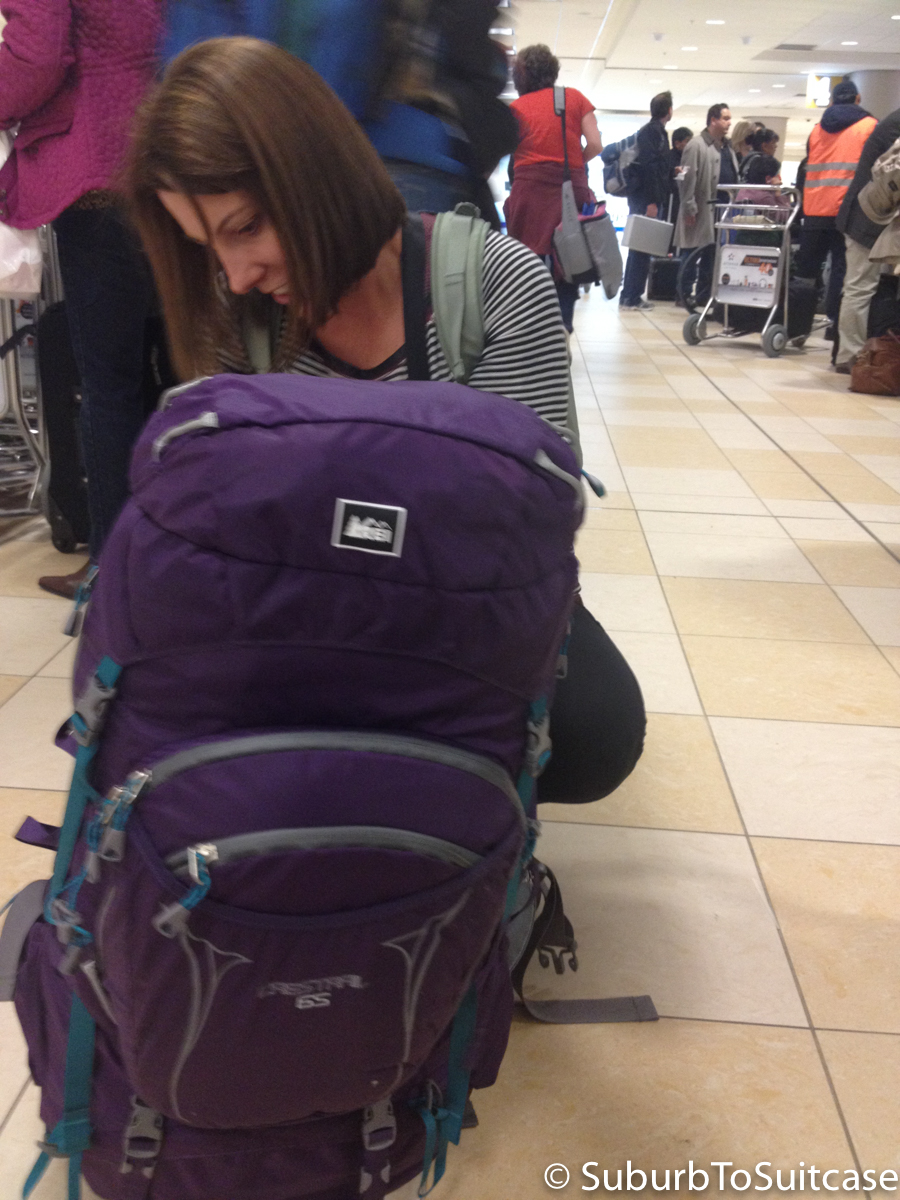2.2K

There really is no “one size fits all” for packing – it depends on a variety of factors such as destination, weather, travel purpose, etc. That said, I do use some techniques to lighten the load and save the strain on my shoulders, elbows and back. I learned the lessons below through experience (and envy). When I began traveling, I would watch others and try to learn how they were traveling so light and seemingly carefree. With each additional trip, my bags became smaller and lighter.
- Choose Your Base Color – Having trouble fitting all your clothes into your bag? Think black, navy, brown or gray – choose a color palette and select your clothes around that. It will likely help minimize the amount of items you think you need to pack.
- Iterate – Once you think you have your clothes ready, set them out and then reduce them by 25%. Remember, it is easier to launder items on a trip than it is to lug them around. It is generally easy to find a laundry facility and most hotels have someone who can care for your clothes for a very reasonable price.
- Select Your Shoes Wisely – Test your shoes. Be sure they are comfortable and appropriate for the terrain you will be covering. Your clothes will not matter if your feet hurt. Wear these around before you pack them to be sure they are comfortable. If staying in hostels, pack a pair of shower flip-flops.
- Roll Your Clothes – When it comes to actually packing, roll your clothes tightly instead of folding them. This will condense your items into a smaller space because it removes some of the air, creates uniformity and also help you fill small spaces to utilize every inch or room.
- Use Packing Cubes – Consider the featherweight style packing cubes. This will keep similar items together and can help avoid an embarrassing situation if you are faced with an impromptu baggage inspection. Remember to still roll your clothes before putting them in the cubes. You may be surprised how much you can fit without jeopardizing zippers.
- Compression Bags – Have limited packing space to work with? Consider using a compression bag. This may very well be the best invention ever when you are simply packing clothes and toiletries. Keep in mind that a compression bag will condense your items to save space but the weight is still the same. Test the weight of your bag before you overload it. The other point to note is that if you are carrying any odd sized items in a backpack (e.g., dive gear), a compression bag could actually make your packing your clothes more difficult. You need to be able to easily access your items – don’t get yourself into a situation where everything is packed tight. It will make security checks painful and unpacking and repacking in intermediate destinations frustrating.
- Watch Your Weight – When in doubt, weigh your luggage. This is a good way to avoid a surprise when arriving at an airline ticket counter. No one likes to be faced with the choice of removing items or paying an overweight bag fee. There are many varieties of inexpensive travel luggage scales available now for personal use. I carried one with me to Fiji where they are very particular with the weight of carry-on luggage, particularly, and it was so nice to have. Everyone around me wanted to borrow it.
- Measure Your Bags – Verify your airline restrictions and measure your luggage if you are traveling internationally. Your first flight may involve a domestic airline with few restrictions but if you need to take any charter flights between locations (islands, for example), your regional flight may limit distance around the bag (height + width + depth often needs to be 60″ or less) and the longest side of the bag (often needs to be 30″ or less). There may also be a baggage limit for carry-ons as well as checked baggage so research your airlines before you pack.
- Prepare Liquids – If you are subject to restrictions on liquids in carry-on luggage, be prepared. Many airlines require you fit all of your “liquids” (liquids, aerosols, pastes, gels) into one clear quart size zipper bag per person. Inside that bag, each item should be 3.4 ounces (100ml) or less. This bag will generally need to be screened separately through security. When in doubt, put liquids (except medications and baby formula) in your checked luggage.
- Skip Locks – Be careful with luggage locks. Aside from the fact that a lock is generally worthless against anyone with a ballpoint pen and YouTube access these days, it can also cause you problems with TSA. Most locks now have an easy access method for TSA screeners, but if not, your suitcase may be damaged if it needs to be opened. Either way, your lock may not arrive at your final destination so set your expectations accordingly. Locks can entice a thief since they may be more curious what is enclosed behind that easy to crack device.
- Reserve Space – Save some room for souvenirs or unexpected items you may need to purchase on your trip. There is nothing worse than being out of space and not able to add a special item you would like to take home with you. Remember that your bags are likely organized optimally when you are at home. They never pack as simply on the return.

The time I exponentially overpacked (that backpack is as big as me and weighed a ton since it had dive gear loaded inside) – note the additional daypack and purse strap too. Ah, the lessons learned!
